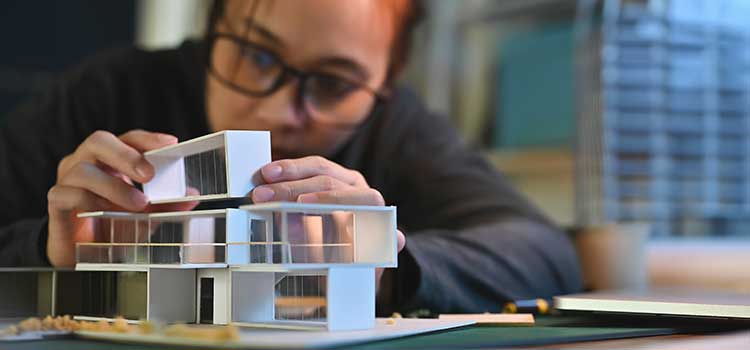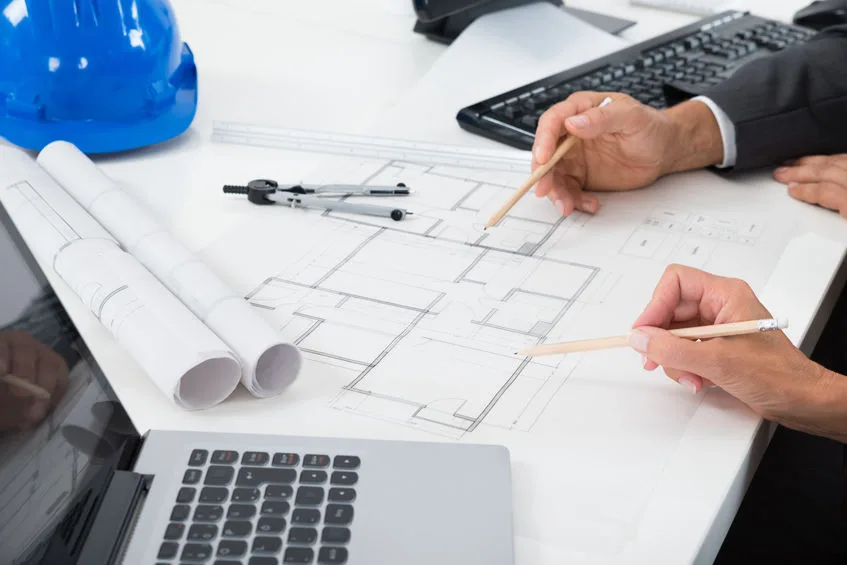Architect Recommended Software for 3D Modeling
Architect Recommended Software for 3D Modeling
Blog Article
The Duty of Sustainability and Modern Technology in Modern Architect Practices
Sustainability and technology are improving contemporary design in methods you may not anticipate. By welcoming environmentally friendly materials and clever technologies, designers are not simply developing buildings; they're crafting settings that boost our top quality of life. This change isn't just about aesthetics or performance; it's concerning establishing a responsible strategy to our world's future. What's driving this change, and how can these modifications impact your community?
The Relevance of Sustainable Design
Lasting style is essential not just for the setting however also for improving our quality of life. When you embrace sustainable design, you're not just reducing your carbon footprint; you're creating spaces that promote health and wellness and wellness.
Furthermore, sustainable design usually leads to more powerful areas. When structures are made with eco-friendly techniques, they can motivate others to do the same, promoting a culture of sustainability. You'll notice enhanced residential property values and a greater feeling of pride in your surroundings.
Lastly, by prioritizing sustainability, you're purchasing the future. You're ensuring that future generations appreciate a much healthier world and dynamic neighborhoods. So, when you consider your following job, consider just how lasting architecture can boost your life and those around you.
Cutting-edge Products Transforming Building Practices
As you discover ingenious materials in style, you'll discover that biodegradable building and construction products are improving exactly how we consider sustainability. Recycled content innovations are offering new life to waste, while clever material technologies boost constructing efficiency. These innovations not only advertise eco-friendliness however also press the boundaries of layout.
Naturally Degradable Building And Construction Materials
While traditional construction materials frequently contribute to environmental degradation, biodegradable construction products are arising as a feasible option that changes building practices. By incorporating biodegradable options right into your layouts, you're not simply improving aesthetic appeal; you're also making a positive impact on the planet. As you adjust to these ingenious materials, you'll find that they offer resilience and versatility, allowing you to create structures that straighten with modern-day values of sustainability and responsibility.
Recycled Content Technologies
In recent times, ingenious products with high recycled material have revolutionized structure practices, offering engineers interesting new options - Architect. You can now include materials like recycled steel, which not just lowers waste yet likewise boasts remarkable stamina. Recycled glass is one more great choice, giving aesthetic allure while lessening ecological impact

Smart Material Technologies
Smart product technologies are improving the means you think of developing techniques, providing vibrant remedies that adapt to transforming conditions. These ingenious products, such as self-healing concrete and thermochromic glass, improve structure efficiency and sustainability. When harmed-- these advancements are no longer just concepts, think of frameworks that can readjust to temperature level changes or repair themselves. By integrating smart materials, you can produce energy-efficient layouts that respond to their environment, minimizing general power intake. The capacity to adapt and keep track of in real-time streamlines upkeep and extends the life-span of structures. As you welcome these modern technologies, you're not simply introducing; you're adding to a much more lasting future in architecture, merging functionality with ecological duty.
The Combination of Smart Technologies in Design
As technology evolves, incorporating wise services right into building style becomes important for creating reliable and sustainable areas. You can incorporate clever modern technologies like developing management systems, which maximize energy usage and improve occupant convenience. Sensors can monitor ecological conditions, readjusting illumination and temperature immediately based on real-time information. This flexibility not only improves individual experience but likewise lowers energy usage.
Incorporating Internet of Points (IoT) gadgets permits seamless interaction among numerous structure systems, enabling you to make data-driven choices that enhance functionality. Smart products that respond to environmental adjustments can better enhance your design, providing dynamic services to ever-changing conditions.
Energy Efficiency and Renewable Resource Solutions
While many architects concentrate on aesthetic appeals, focusing on power performance and eco-friendly power solutions is essential for lasting design. You can begin by including easy solar style, which maximizes all-natural light and warmth, minimizing reliance on synthetic illumination and heater. Utilize high-performance insulation and energy-efficient windows to lessen energy loss.
Do not ignore renewable resource systems-- mount solar panels or wind generators to create tidy energy on-site. click here You can likewise consider integrating geothermal home heating and cooling down systems for a much more lasting temperature level law.
By selecting energy-efficient appliances and illumination, you'll not just minimize energy consumption however additionally reduced operational costs for building passengers.
Including these concepts into your designs not just benefits the atmosphere but likewise improves the building's appeal and worth. Ultimately, your commitment to energy effectiveness and renewable resource will certainly set your tasks apart in a competitive market.
Water Preservation Techniques in Modern Style
Including water conservation approaches right into modern-day architecture is necessary for developing lasting buildings that lessen ecological influence. You can attain this by integrating rainwater harvesting systems, which gather and keep rain for irrigation and non-potable uses. Applying low-flow components and wise watering systems also lowers water consumption, making certain effective usage throughout the building.
Take into consideration using drought-resistant landscaping, which calls for less water and promotes biodiversity. Including absorptive paving materials enables rain to infiltrate the ground, decreasing runoff and recharging groundwater products.
Additionally, installing greywater recycling systems can repurpose water from sinks and showers for commode flushing or irrigation, additional conserving sources.
The Effect of Biophilic Style on Wellness
Biophilic design brings nature inside, and you'll discover its positive impacts on your health and wellness and happiness. By improving interior air top quality and linking you with all-natural elements, these areas can transform your everyday experience. Allow's discover exactly how integrating these features can increase your total well-being.
Nature's Impact on Health
When you include elements of nature into your environments, it can substantially boost your physical and mental health. Biophilic design, which stresses natural light, plants, and organic products, promotes a sense of link to the outdoors. Accepting biophilic layout is a step towards a healthier way of life.
Enhancing Indoor Air Quality
While many individuals concentrate on appearances and performance in style, improving interior air top quality plays an important duty in your overall well-being. By including biophilic style aspects, you can enhance air top quality normally. Focusing on these elements in your design will not just boost your space yet also click here promote a feeling of calm and health.
Link With Natural Environments
When you get in touch with natural environments in your area, you not only boost its visual appeal but additionally significantly enhance your wellness. Biophilic design motivates you to incorporate functions like plants, natural light, and natural materials. These aspects develop a soothing atmosphere, lowering stress and anxiety. Research study shows that being around nature can enhance your state of mind and cognitive function, helping you feel more efficient and concentrated. When you welcome the outdoors inside, you could discover better air high quality and raised convenience. Straightforward changes, like including a living wall or large home windows, can exceptionally affect your experience (Architect). Eventually, incorporating nature right into your environment leads you to a much healthier, happier way of life, cultivating a deeper connection to the globe around you.
Future Fads in Lasting Architectural Practices
As the globe encounters pressing environmental obstacles, architects are progressively welcoming ingenious approaches to sustainability that redefine exactly how we style and develop. You'll see a surge in biophilic design, incorporating nature right click here into metropolitan spaces to enhance wellness and minimize energy consumption. Smart modern technologies, like AI and IoT, are improving energy management in structures, optimizing resource usage, and decreasing waste.
In addition, modular building and construction is getting grip, permitting faster, much more efficient building procedures while decreasing environmental impact. Using sustainable materials, such as redeemed timber and recycled steels, is ending up being conventional method. As you explore these trends, expect a shift toward round layout, emphasizing the lifecycle of products and advertising reuse and recycling.
These forward-thinking techniques not only address ecological worries yet additionally produce healthier, a lot more resilient communities. By staying educated concerning these fads, you can assist shape a lasting future in design.
Often Asked Inquiries
Exactly How Can Sustainability Affect Project Budget Plans and prices?
Sustainability can significantly affect job prices and budgets. You may discover that first investments in environmentally friendly materials or modern technologies cause long-term savings through energy efficiency, decreased waste, and prospective government motivations, inevitably balancing the total expenditures.
What Accreditations Exist for Lasting Design?
You'll find several qualifications for lasting design, consisting of LEED, BREEAM, and the Living Structure Difficulty. These certifications help you demonstrate your dedication to sustainability and can enhance your project's integrity and attract customers.
How Does Local Society Impact Lasting Style?
Regional culture shapes lasting layout by reflecting community traditions, values, and materials. You'll discover that integrating regional aesthetics and techniques not just values heritage but likewise boosts the performance and approval of your architectural tasks.
What Function Does Client Education And Learning Play in Sustainable Practices?
Customer education and learning's necessary for promoting lasting practices. When you notify clients about benefits, costs, and environmental effects, you encourage them to make educated decisions, fostering a collective approach that improves the job's overall sustainability.

Just How Can Architects Measure the Success of Sustainability Efforts?
You can measure the success of sustainability initiatives by tracking power usage, reviewing material performance, and event feedback from customers. Routine audits and comparisons against benchmarks will certainly aid you improve your strategies and showcase renovations effectively.
By incorporating wise products, you can create energy-efficient layouts that react to their atmosphere, lowering general energy intake.While lots of engineers focus on looks, prioritizing power effectiveness and eco-friendly power remedies is crucial for sustainable style. Biophilic design, which highlights all-natural light, plants, and natural materials, fosters a feeling of connection to the outdoors. Biophilic design urges you to integrate features like plants, natural light, and organic materials. As you explore these fads, expect a shift towards circular layout, emphasizing the lifecycle of products and promoting reuse and recycling.
Report this page